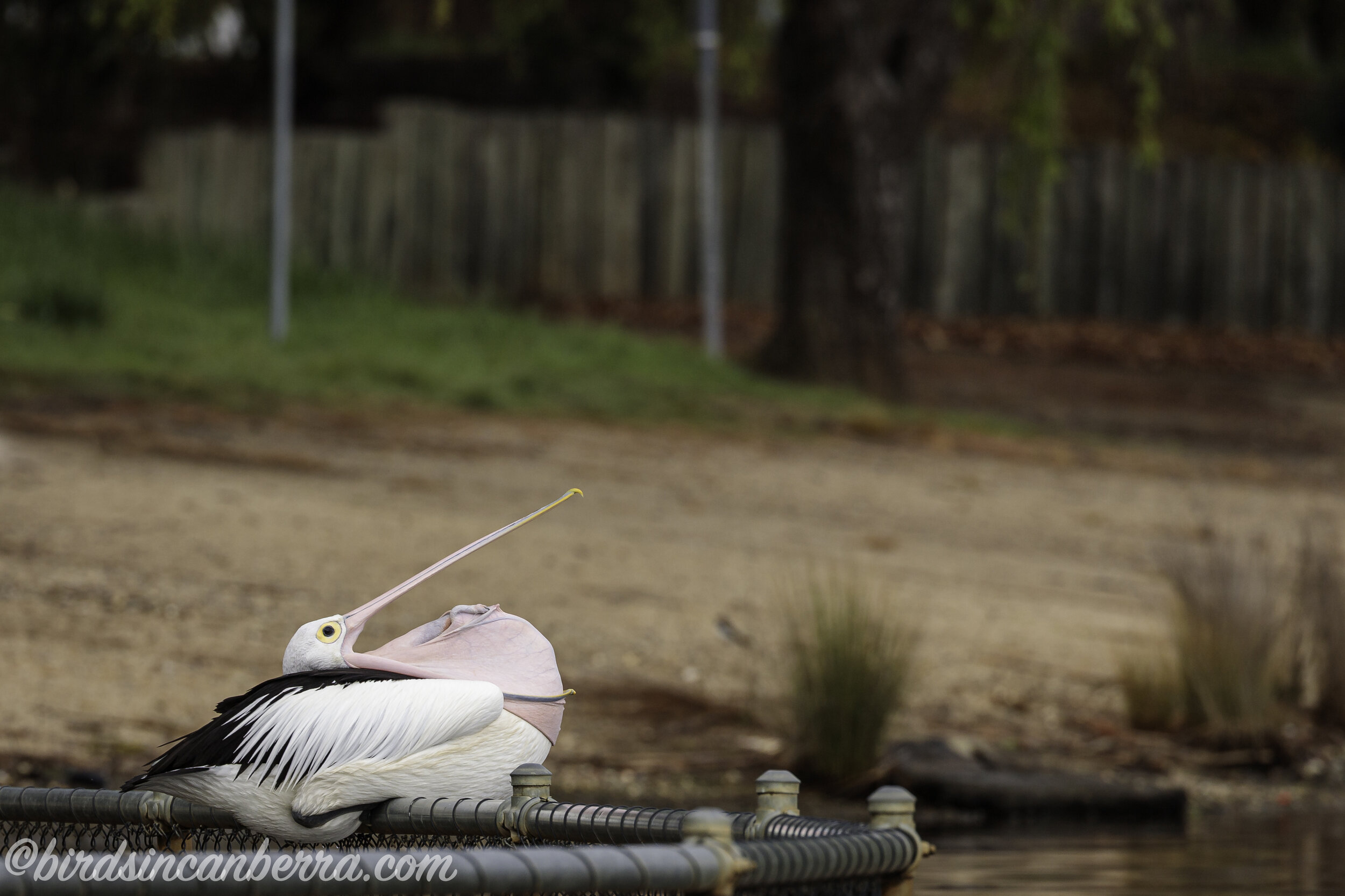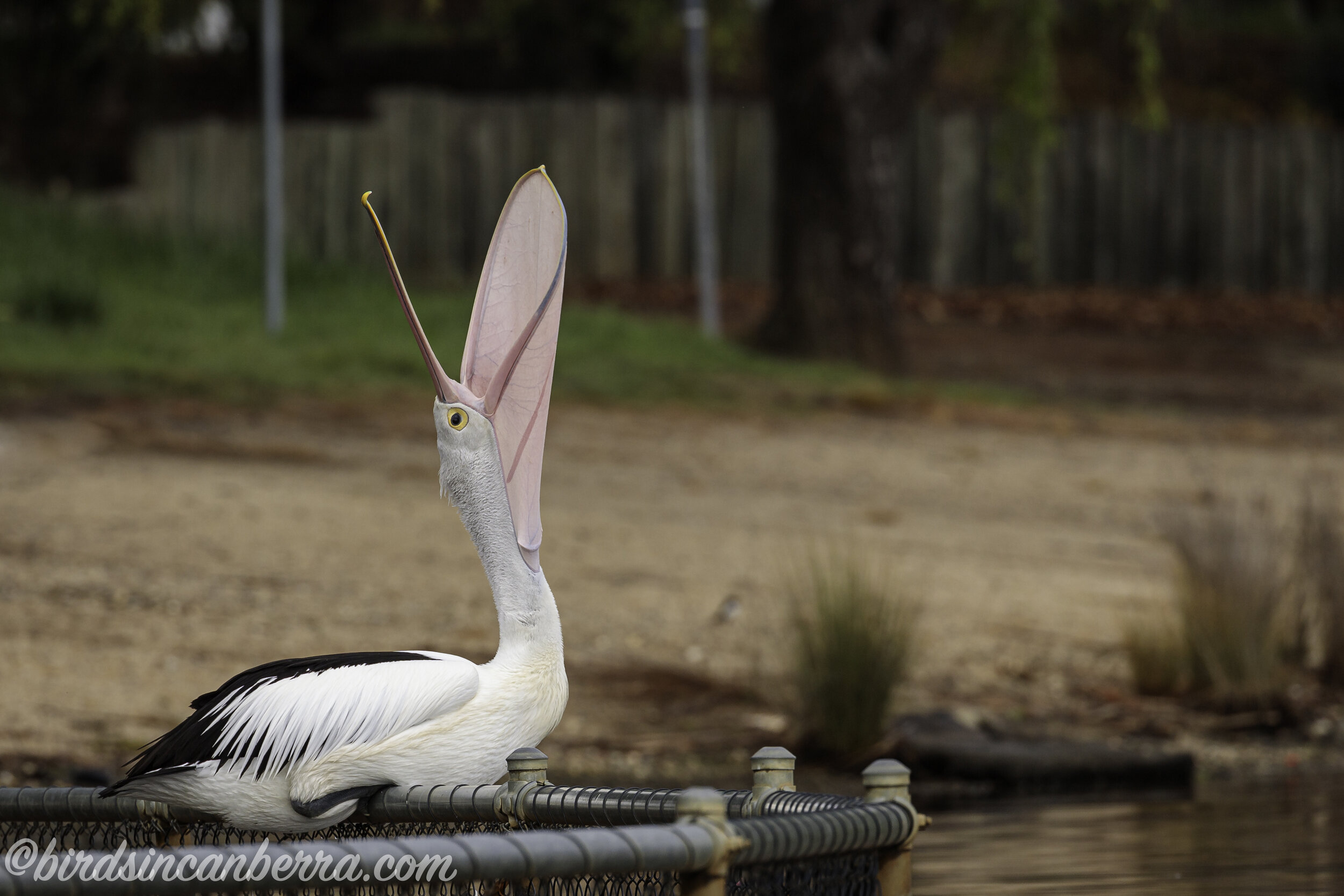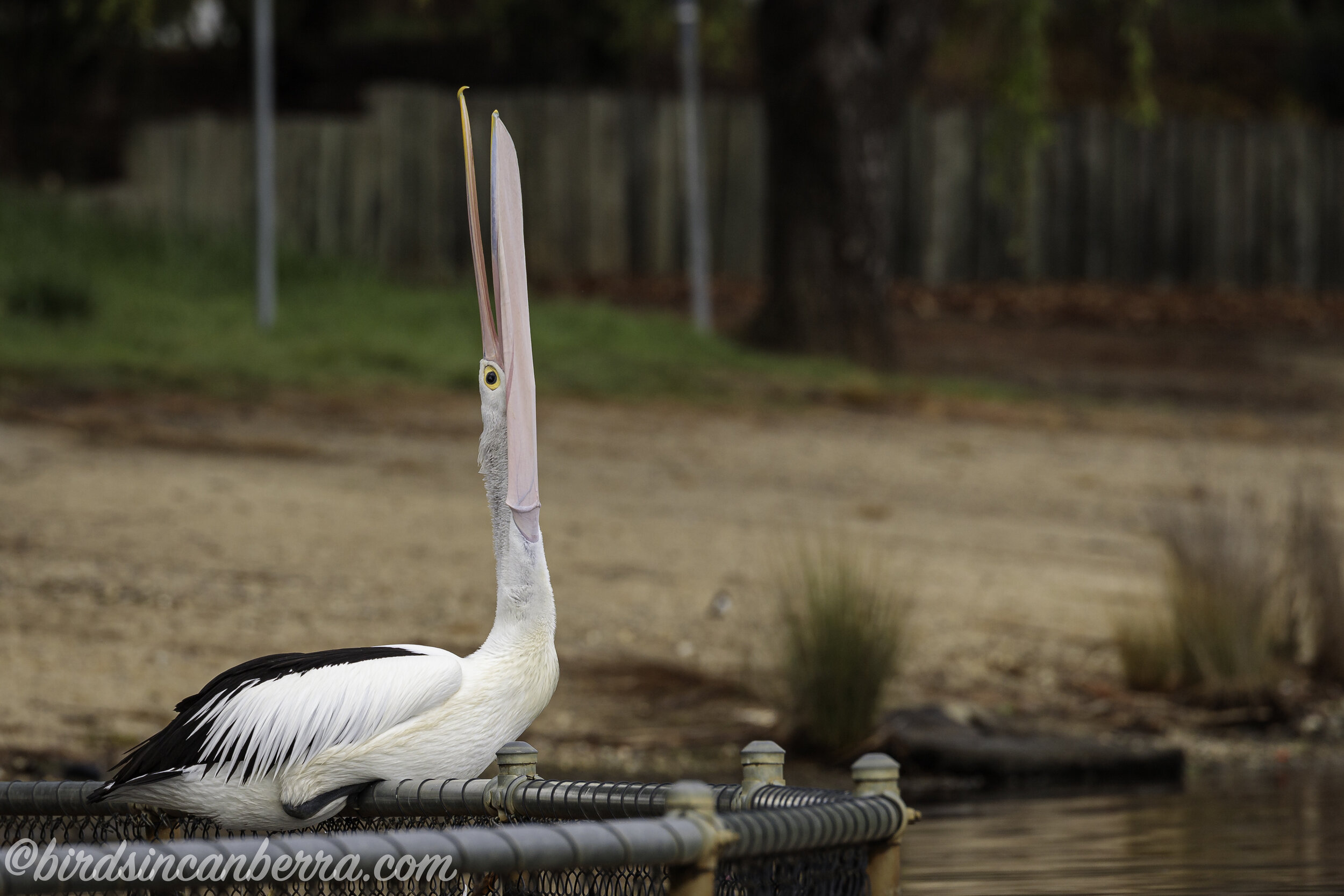The weekend of 2-4 October 2021 was a long weekend in Canberra with a public holiday on the Monday for Labour Day. It was also the Sunday morning where Daylight Saving Time started so clocks were put forward one hour. The effect was that we all lost an hour of sleep and for the following month the sun will appear to be catching up to when it was rising before as it gets incrementally earlier each day. I was fortunate to be able to go paddling on both Saturday and Monday, with most of my sitings occurring on Saturday due to the then extra hour of daylight I had when I started my paddle before Daylight Saving Time commenced. Don’t get me wrong, I enjoyed being out on Lake Burley Griffin both days but I will be waiting for the light to return to the same time when I start my paddle. Still, spring was upon the city, with so much birdlife active on the lake. Many of my favourites such as cormorants, darters and pelicans were out as were the seasonal Australian Reed Warblers. With COVID lockdown restrictions eased the lake was getting busier but there was still enough birdlife around to make the paddle a truly enjoyable experience, especially coming around an island to see an Australasian Darter beautifully posed on an isolated branch. Roll on spring and summer, I am looking forward to the birds and other life being active again. I hope that you like the photographs below.
With Canberra still in COVID lockdown I felt cautious as to where I could go. Lake Burley Griffin was not far from home and I because I was out exercising that I was following the sensible restrictions in place to protect our families and communities. It was also very easy to maintain social distance on the lake because paddling was not bounded by footpaths or trails, I could go where I wanted.
The first two pictures below were from the same morning. The first was taken at close to 5:30AM just before I started my paddle. You can see how much light there already was before Daylight Saving Time started the next day. Even with that cloud there was still enough light in the morning for photography.
The next shot was taken less than an hour later when the sun was already rising from the right of the shot, trying to burn the fog away to bring its warmth to the day. I took that photograph from my kayak, facing north-north-east.
The final shot of the person on the surf ski was taken two days later at the end of my paddle with the intent to show how the people of Canberra make use of this marvellous artificial lake. We are so lucky to have this beautiful feature in our city.
My kayak beside the lake before the paddle and before the change to daylight saving
(Apple iPhone 8 [ISO 100, 3.99mm, f/1.8 and 1/4 SEC])
Fog rolling over Black Mountain
(Canon EOS 6D Mk II with a Canon EF100-400mm f4.5-5.6L IS II USM [ISO 320, 100mm, f/8.0 and 1/400 SEC])
A paddler on a surf ski enjoying the lake
(Canon EOS 6D Mk II with a Canon EF100-400mm f4.5-5.6L IS II USM [ISO 640, 400mm, f/10 and 1/800 SEC])
On the Saturday when I went for a paddle, I was not sure how good the photographic opportunities would be given that it was so overcast. However, when I finally paddled to the barrier on the lake side of Scrivener Dam I saw a single Little Black Cormorant (Phalacrocorax sulcirostris), in its black finery perched on the yellow of the bar preventing further progress. Around the bird’s sparkling, emerald green eye, the flecks of breeding white were willing spring to arrive to start the next generation of cormorants. The cormorant was perched on the barrier pole, looking around. Originally, it had its wings outstretched but when it saw my approach it drew its wings close in, wary of what I may be. The deep water in this part of the lake would not concern this species because it is a very good swimmer and well-evolved to using deep water to hunt for prey. I had to bump my ISO up to take the photo of this dark bird, against a darkish background under dark skies but I thought there was a lovely contrast between the rich black of the bird and the yellow hue of the pole.
Little Black Cormorant sitting on the barrier restricting waterside access to Scrivener Dam
(Canon EOS 6D Mk II with a Canon EF100-400mm f4.5-5.6L IS II USM [ISO 1000, 400mm, f/8.0 and 1/400 SEC])
Paddling to the western side of the part of the lake near the dam I could see a pair of Australian Reed Warblers (Acrocephalus australis) moving through the shoreside vegetation. These birds only visit Canberra in the warmer months so seeing them was a sign that spring and summer were coming. In the north of Australia they stay local the year round but the cold in the south probably does not suit them and it is probably harder to find the insects that they feed on. They tend to move through plants searching for food but occasionally they come to the outer branches or the top of the plant to make for a decent photograph. Maybe this will be the year I get that photograph. However, they always seem to be in the perfect spot whenever I don’t have my camera at hand.
Australian Reed Warbler in the foliage
(Canon EOS 6D Mk II with a Canon EF100-400mm f4.5-5.6L IS II USM [ISO 1250, 400mm, f/8.0 and 1/400 SEC])
Returning northwards from the dam a pair of Black Swans (Cygnus atratus) were sedately swimming through the reeds on the southern side of Barrenjoey Peninsula. The light was still dark when this pair swam calmly past the front of my kayak, barely metres from my bow, without giving me a glance of concern. I felt that it was a moment to capture. While I took some wider shots I preferred a closer head shot because of the detail I could see. These were striking birds with the way the bright red beak ended the long, strong neck. That neck is also a massive bonus for the swan, plunging it up to a metre deep into water to obtain the vegetation that it feeds on. The Black Swans around the lake are accustomed to people, who often feed them. Humans do not scare them. The swans also seem to sport bands on their legs so that they can be monitored and this pair also had bands on.
Head shot of a beautiful Black Swan
(Canon EOS 6D Mk II with a Canon EF100-400mm f4.5-5.6L IS II USM [ISO 1250, 400mm, f/8.0 and 1/400 SEC])
After the swans I followed the peninsula around east before getting to Yarramundi Reach. This part of the lake had permanently marked lanes for rowing boats so I paddled across carefully to avoid an accident with some of the boats that were using the lanes. There were not many boats and it was easy to cross safely just after some rowers had passed. My route then took me north along Weston Park.
About halfway along that bank a group of what I thought were only Little Black Cormorants swam away from trees. They were already moving before I was close so I guessed that something had spooked them from within the park or they were going hunting in the water. The group, of about 40 birds, headed west across the water, back towards the rowing lanes. While they were moving some of the birds would occasionally dive, but not apparently deeply because they would surface very quickly. The cormorants formed a sort of an extended line of black heads sticking above the water but with many of the birds clumped close together. The backs of the birds were barely visible below the water, while their heads were minimally angled up with their bills slightly pointing to the sky. They looked from side to side but always travelled in a constant direction, however, the line started to expand and lengthen. While photographing them I noticed two bits of white among the dark, black heads and I realised that there were two Great Cormorants (Phalacrocorax carbo) among all black birds. Despite this mixing both species were swimming amicably together. Although, I did not think that I had made the group initially swim, I was worried that my presence was sending them towards the rowing lanes. The birds would no doubt dive beneath any boat but I did not want them focussed on me while unsighted rowers were speeding towards them so I swung away to continue my paddle. I had really enjoyed seeing that group of birds and I wished that they had started to fish together. I was also interested to see the different species together, apparently without any issue despite them having a similar diet.
Great Cormorants, white face in the centre and larger head sixth bird from left, swimming with Little Black Cormorants
(Canon EOS 6D Mk II with a Canon EF100-400mm f4.5-5.6L IS II USM [ISO 800, 400mm, f/8.0 and 1/400 SEC])
I continued my trip and since I was enjoying myself so much, and I had four hours now to exercise, I headed towards Sullivans Creek, which I briefly headed up. The light was not good so I turned back to the lake to see what else I could find to photograph.
Paddling around the eastern end of Springbank Island I caught a glimpse out of the corner my eye of what I thought was a strangely coloured stump or log sticking out of a pile of cut trees. Strangely, I also had the feeling that the stump was looking at me. Not really thinking much of it I glanced to my right side to see a Swamp Wallaby (Wallabia bicolor) standing motionless on the discarded pile of cut trees. Its eyes were tracking my progress in the water. I was able to get a few shots while I slowly drifted past but when I paddled backwards to return for better photographs the wallaby had gone.
This wallaby is somewhat well known for its existence on Springbank Island. Presumably it swam there at some stage and has stayed put because the vegetation was plentiful, as was the cover. There was always water in the lake and no predators or dogs would annoy it. Some people visit the island but parts of this small patch of dirt have thick foliage that probably provided enough cover for the dark-coloured wallaby. I had seen its disappearing hind quarters at some stage well before but this was the first chance to actually take a photograph of this minor celebrity. I wondered if it ever felt lonely, being apparently the only Swamp Wallaby on the island.
Swamp Wallaby on a pile of cut trees on Springbank Island keeping a watch on me
(Canon EOS 6D Mk II with a Canon EF100-400mm f4.5-5.6L IS II USM [ISO 800, 400mm, f/7.1 and 1/400 SEC])
Just on from the wallaby a beautiful female Australasian Darter (Anhinga novaehollandiae) was resting on a dead branch that arched out of the water leaving her starkly isolated against the subdued colour of the overcast morning sky. The background really let the colours of this bird stand out, with her bright yellow beak and even the black and white piano keys of her feathers were clear. I tried not to get too close because she was starting to look from side to side, normally a sign that the bird was looking to depart. She also made a clucking noise with her beak by closing it quickly. She was such a beautiful sight that morning and so wonderfully posed. I was even on the best side to have the available ambient light shine on her.
Below her photo there is a shot from two days later, taken not far away. The bird in that bottom photograph was an immature bird, differentiated from the female by the less well defined colouration along the head and neck. The photograph, compared to the picture of the cormorants above, shows how a darter appeared in the water with its body completely submerged and only a snake-like neck above the lake surface.
Australasian Darter female
(Canon EOS 6D Mk II with a Canon EF100-400mm f4.5-5.6L IS II USM [ISO 500, 400mm, f/7.1 and 1/400 SEC])
Australasian Darter juvenile swimming, note the less distinct colours around the head
(Canon EOS 6D Mk II with a Canon EF100-400mm f4.5-5.6L IS II USM [ISO 1600, 400mm, f/7.1 and 1/400 SEC])
Continuing past Springbank Island it was pretty much a straight paddle back to Yarralumla Bay where I launched from. The sun was up but still hidden behind the clouds although the morning was warmer than it had been for months. The rhythmic cut of the paddle blade in the water to the accompaniment of the gliding water off the kayak hull was a lovely melody to relax to. It was truly great to be enjoying the simple things in life.
Approaching the small artificial beach where I would finish my paddle I saw the usual Australian Pelicans (Pelecanus conspicillatus) back on the swimming enclosure. There were two of these superb birds but one was contentedly perched low, with just its head slightly showing above its folded wings, while its two large eyes watched the world wake up in front of it. The bird was not rushing into the morning and did, what I can only describe, as a large yawn by a way of a comment on the day. It is hard enough for a human to hide a deep yawn but when a bird has the largest bill in the animal kingdom, there was no possible way to politely conceal it.
Two days later, when I finished my paddle, there were no clouds but the light was not great because Daylight Saving Time meant that I was effectively finishing with the light from an hour earlier. Even though I was not able to get many photographs while I was paddling after I had secured my kayak to the top of my car I took a while to photograph the many Silver Gulls (Chroicocephalus novaehollandiae) flying to the small bay from the very nearby Spinnaker Island. I was especially trying to photograph a gull flying low across the reflective water. Although I like my Canon EOS 6D Mark II because it was a full-frame camera, the auto focus was not quick and the birds were not close. I think the reflections probably also confused camera’s auto focus system. I have not really taken many shots of birds in flight like that so I was happy for the practice. Beside that, it also gave me an excuse to just spend a bit longer enjoying the morning beside the lake.
Silver Gull flying low over the water
(Canon EOS 6D Mk II with a Canon EF100-400mm f4.5-5.6L IS II USM [ISO 6400, 400mm, f/10 and 1/800 SEC])
Over a three-day long weekend I enjoyed two lovely paddles on the wonderful Lake Burley Griffin. I was able to see and photograph some of the wonderful birds that call it home, as well as just enjoying being outside in what was a reasonably safe place during these strange pandemic times. I hope the repeated posts on Lake Burley Griffin are not too boring but I always enjoy the experience of being on the lake and the birds are always so wonderful.
Thanks for reading this post and thanks also for looking at my photos. I hope you come back again to read more about some of the wonderful natural things that the Australian Capital Territory has on offer. All the best until the next post.
![Head shot of a beautiful Black Swan(Canon EOS 6D Mk II with a Canon EF100-400mm f4.5-5.6L IS II USM [ISO 1250, 400mm, f/8.0 and 1/400 SEC])](https://images.squarespace-cdn.com/content/v1/5b474d53b40b9dfc79289e98/1633425367961-2LO4J6GCB68O0T9O6KWU/Black_Swan_Lake_Burley_Griffin_2322_20211002.jpg)


